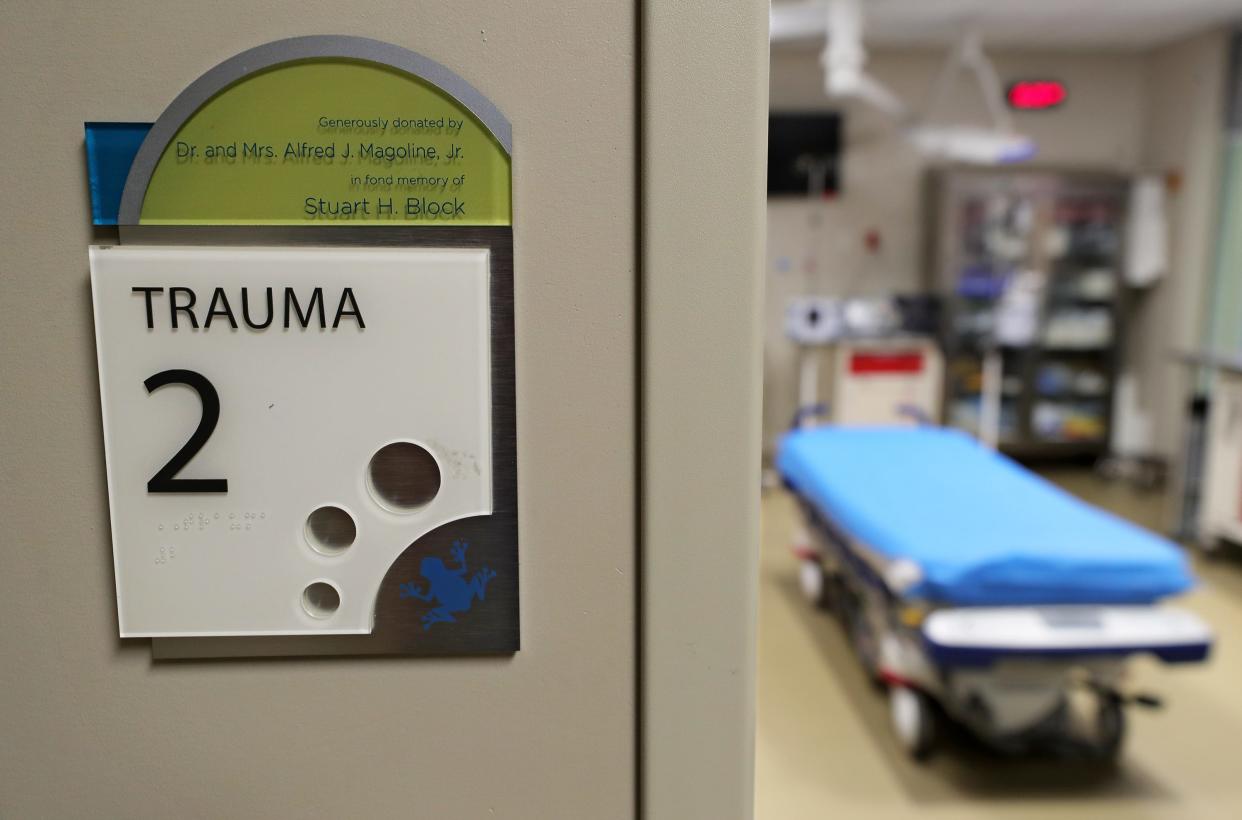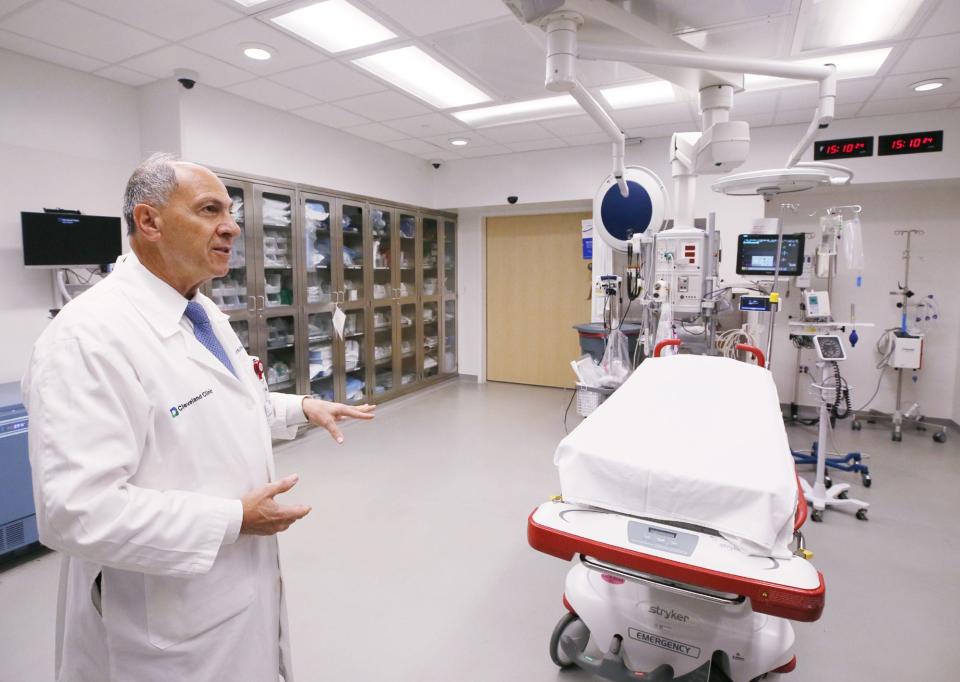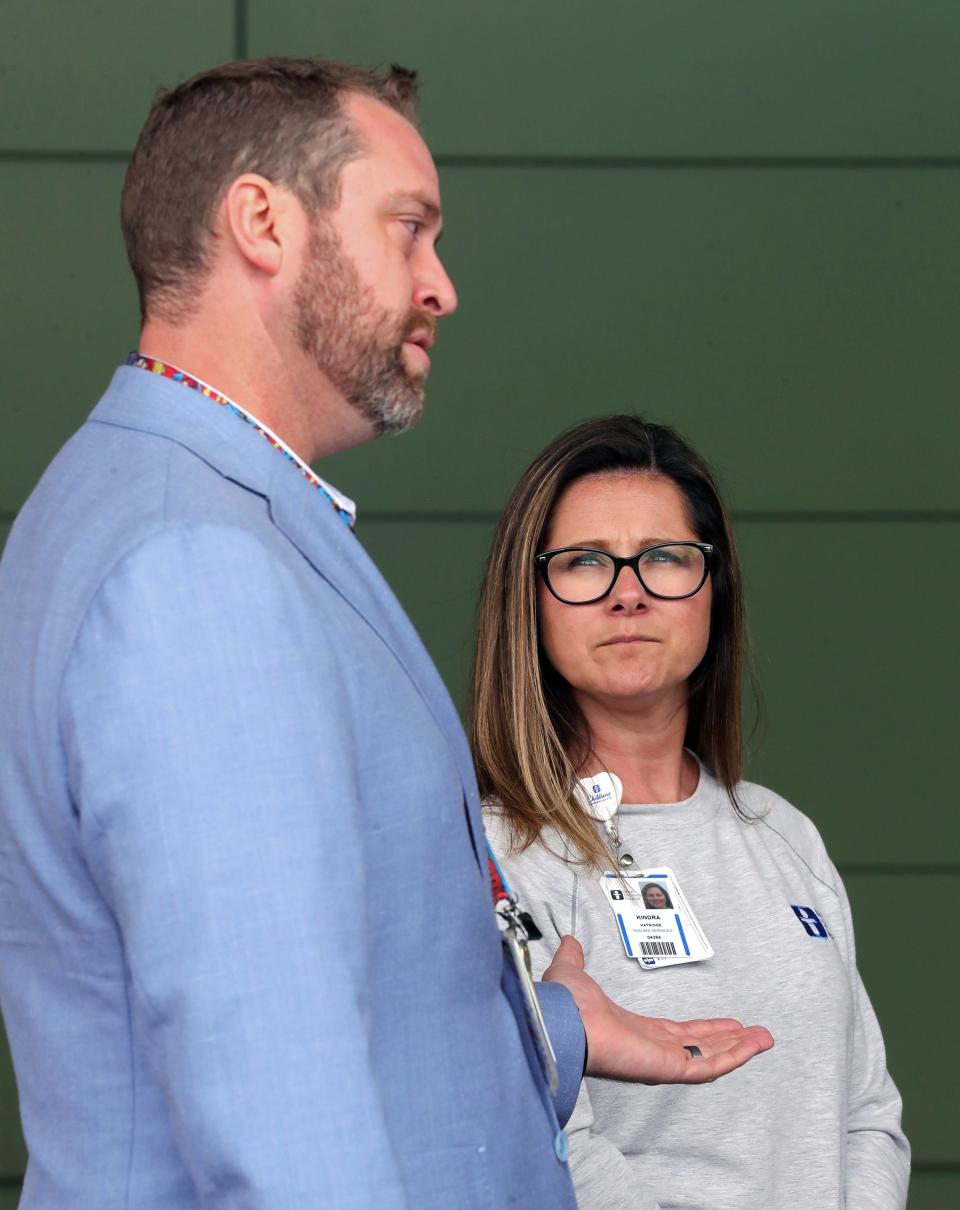Akron’s 3 hospitals seek solutions to city’s gun violence problem

There might not be a fast cure, but Akron’s three hospital systems are working to find ways to curb the city’s escalating gun violence.
A representative from the Akron mayor’s office has been in touch with trauma staff at Akron Children’s Hospital, Cleveland Clinic Akron General and Summa Akron City Hospital to begin discussions about how to address the violence.
Hospital officials said the talks are still in the early stages, and no group meetings have been arranged.
In the meantime, the three hospitals each have programs in place to address gun violence and to help victims recover mentally and physically.
'It's just continuous': Gunshot patients are becoming more common in Akron's ERs
Survival rates of patients with gunshot wounds is high and deaths are low, the trauma teams report. At Akron General, Dr. Farid Muakkassa, trauma medical director and chief of trauma surgery, estimated about 8% of gunshot patients do not survive. Summa data showed a 14.2% death rate among gunshot patients since 2020 at Akron City. Children’s data from the last 10 years showed a 6.4% death rate among gunshot wound patients.

Akron General has a trauma survival network, where survivors talk to people who are injured.
Part of being a Level I trauma center, Muakkassa said, is also having an injury prevention and outreach program with a full-time person who goes to schools to talk about prevention of everything from bicycle accidents to gun violence.
Akron Children’s has a trigger-lock program in its emergency department and primary care offices.
Through the program, patients’ families can get a free trigger lock if they have a gun at home, said Dr. Laura Pollauf, the division director of pediatric emergency medicine at Children’s.
Summit County also offers free gun locks, said Greta Johnson, chief of staff for Summit County Executive Ilene Shapiro. They can be picked up at the Summit County Executive Office on the eighth floor of the Ohio Building, 175 S. Main St. in Akron, or at the Russell M. Pry Building at 1180 S. Main St. in Akron from the Summit County Sheriff's deputies at the main door.
Trauma staff offers ideas to help resolve increase in gun violence
A key to addressing the problem is “taking that global look at where was the really the root cause of the gun violence,” said Alexandra Carpenter, trauma program manager at Summa Akron City Hospital.
Carpenter said one solution could be to connect victims of violent crimes with social workers and case managers who can help find missing resources that may have contributed to the person getting into an unsafe situation.
“It's really hard for us as health care providers to really mitigate it on the front end. But I do think us working collaboratively and partnering with the city and partnering with our communities to get as much information and education out there as possible is definitely going to get us more information so we can figure out some of the root causes,” she said.

Dr. Nathan Heinzerling, Children’s trauma medical director and a pediatric general surgeon, said working on gun safety, particularly for kids, is very important to curb the number of gunshot patients.
“Making sure handguns and firearms are locked up or inaccessible to children would make a big impact,” he said. Also, “not exposing them to being able to play with or handle a firearm on their own.”
Pollauf said educating adults is also important.
'I am scared.' Residents share their stories in 5 Akron neighborhoods with most gunshots
As incidents of active shooters in schools or crowds have increased, Pollauf said, it's even more important to talk about gun safety.
“We know that educating around gun safety works. If you have a gun in the home and you lock it up and your child doesn’t have access to it, that child is safer. Having no guns in the home is even safer for them,” she said. “But how do you educate in terms of general safety in our world today, in our schools and community events? Like, to me, I feel like all children are potentially at risk, and we really need to be protecting all of them.”
Reporter Betty Lin-Fisher can be reached at blinfisher@thebeaconjournal.com
This article originally appeared on Akron Beacon Journal: Akron's hospital trauma teams offer solutions to city's gun violence

